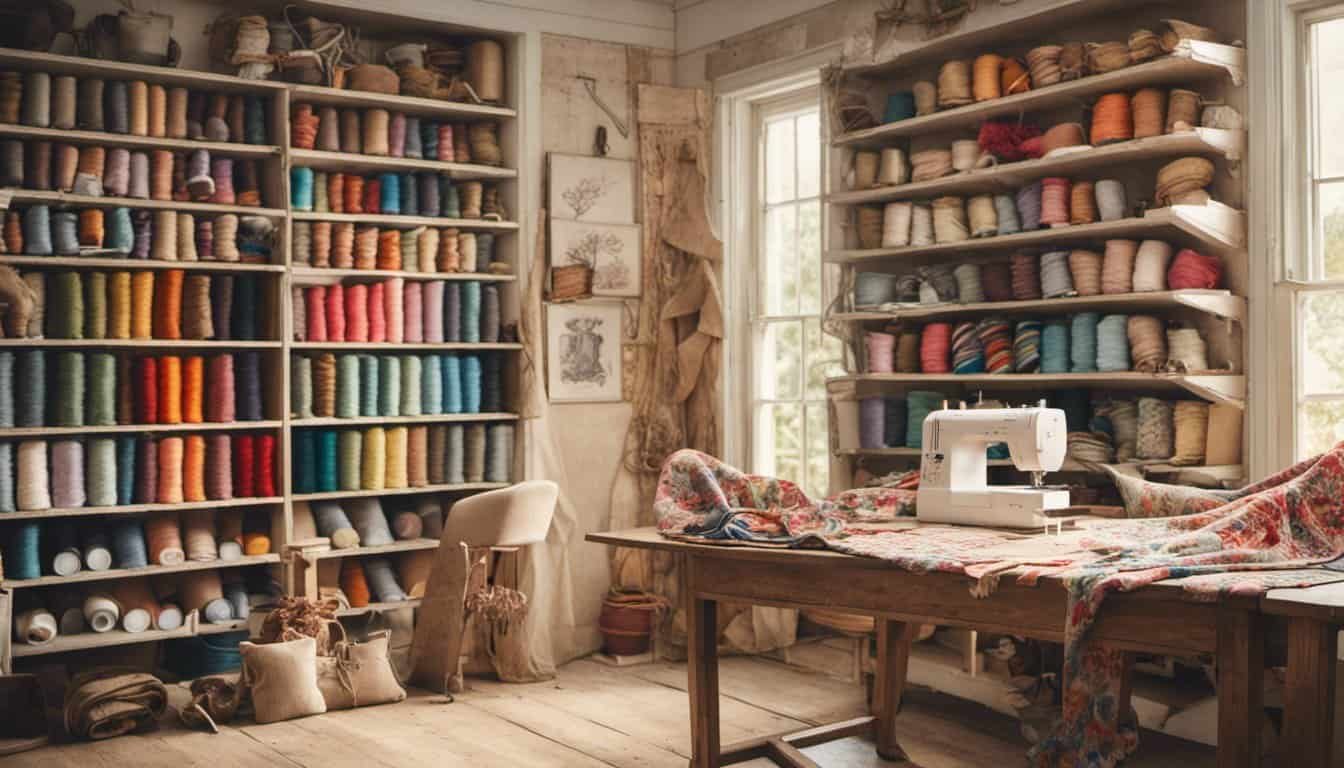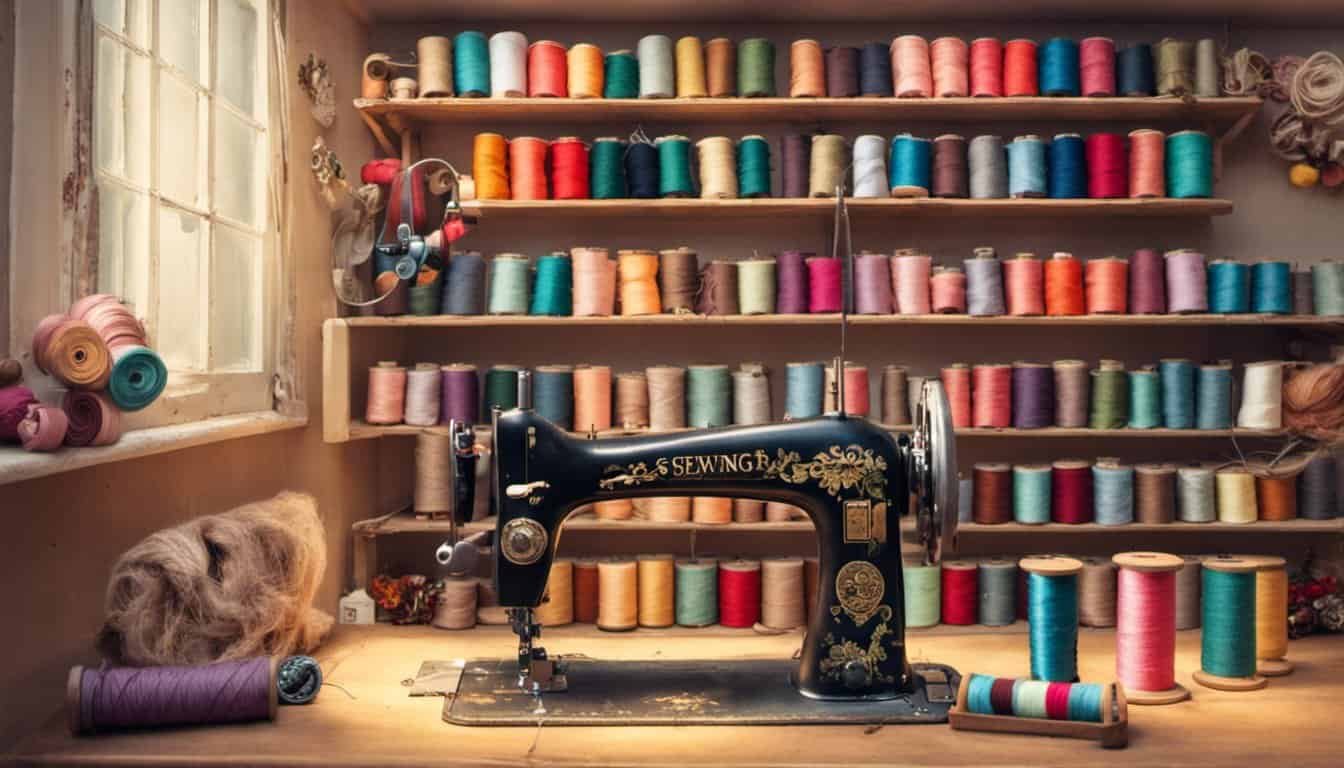Choosing the right fabric weight can make all the difference in your projects. Whether you’re sewing a summer dress or a cozy winter blanket, understanding light versus heavy fabrics helps you select the perfect material every time.
Imagine feeling the gentle breeze through a lightweight cotton or snuggling into the warmth of a thick wool. Each fabric weight offers unique benefits and challenges. By knowing which to choose, you’ll enhance both the look and functionality of your creations.
Let’s dive into the essentials of fabric weights, guiding you to make informed decisions that match your style and needs. With this friendly guide, you’ll feel confident selecting the ideal fabric for any occasion.
Understanding Fabric Weight
Fabric weight indicates a material’s thickness and heaviness, typically measured in grams per square meter (GSM) or ounces per square yard (oz/yd²). Knowing fabric weight ensures your project achieves the desired drape, durability, and functionality.
Common Fabric Weight Categories
| Weight Category | Range (GSM) | Applications |
|---|---|---|
| Lightweight | < 200 GSM | Summer dresses, blouses, linings |
| Medium Weight | 200–400 GSM | Skirts, lightweight jackets, shirts |
| Heavyweight | > 400 GSM | Winter coats, upholstery, blankets |
Selecting the Right Weight
Determine your project’s needs by considering:
- Drapability: Lightweight fabrics offer fluidity, while heavyweight fabrics provide structure.
- Durability: Heavier fabrics withstand wear better, making them ideal for items like upholstery.
- Seasonality: Choose lighter weights for warm weather and heavier weights for colder conditions.
Measuring Fabric Weight
Use a fabric scale or refer to the manufacturer’s specifications to ascertain GSM. Accurate measurement guides appropriate fabric selection, enhancing the quality and longevity of your creations.
Examples of Fabric Weights
- Cotton voile: Approximately 120 GSM, perfect for airy garments.
- Denim: Around 400 GSM, suitable for sturdy jeans and jackets.
- Wool flannel: Approximately 350 GSM, ideal for warm shirts and suits.
Understanding these weight categories and their applications empowers you to select the optimal fabric for your sewing, embroidery, knitting, or crafting projects.
Light Fabrics
Light fabrics offer you versatility and comfort for various projects. Their lightweight nature ensures ease of handling and adaptability.
Characteristics of Light Fabrics
Light fabrics typically have a GSM below 200, providing several distinct features:
- Breathability: Enhances airflow, keeping your garments cool in warm weather.
- Drapability: Allows materials to flow smoothly, creating elegant silhouettes.
- Flexibility: Facilitates easy manipulation during your sewing and crafting.
- Transparency: Some light fabrics, like voile, have a sheer quality suitable for layered designs.
- Quick Drying: Ideal for items that need to dry rapidly, reducing your waiting times.
Common Uses
- Summer Apparel: Dresses, skirts, and blouses benefit from the fabric’s breathability.
- Scarves and Shawls: Lightweight materials provide elegance without bulk.
- Lightweight Curtains: Enhance your room’s aesthetics while allowing natural light.
- Linings: Offer a smooth finish inside your garments without adding weight.
- Bed Linens: Sheets and pillowcases take advantage of quick-drying properties.
- Craft Projects: Perfect for making decorations, accessories, and lightweight quilts.
Heavy Fabrics
Heavy fabrics provide structure and durability for various sewing and crafting projects. If you need materials that withstand wear, these fabrics are ideal.
Characteristics of Heavy Fabrics
Heavy fabrics feature significant thickness and weight, typically exceeding 400 GSM (grams per square meter). They offer excellent durability, making them suitable for items that endure frequent use. Limited drapability ensures a structured appearance, while resilience against wear and tear guarantees longevity. Common materials include denim, canvas, and wool flannel.
| Fabric Type | GSM (grams per square meter) | Common Uses |
|---|---|---|
| Denim | 400-600 | Jeans, jackets |
| Canvas | 450-1000 | Upholstery, bags |
| Wool Flannel | 400-500 | Suits, blankets |
Common Uses
Heavy fabrics cater to projects requiring strength and warmth. If you’re crafting winter apparel, coats and heavy jackets benefit from these materials. Upholstery projects, such as sofas and chairs, utilize durable fabrics like canvas. Additionally, heavy fabrics are perfect for tote bags, quilts, and sturdy curtains. These applications take advantage of the fabric’s ability to maintain shape and resist daily wear.
Comparing Light and Heavy Fabrics
Durability
Heavy fabrics offer superior durability, making them ideal for projects that endure frequent use. Materials like denim (400 GSM) and canvas resist wear and tear, ensuring your creations last longer. In contrast, light fabrics may wear out faster but are perfect for items like summer dresses and scarves that require less structural strength.
Comfort
Light fabrics enhance comfort, especially in warm weather, due to their breathability and flexibility. Fabrics such as cotton voile (120 GSM) and linen allow air circulation, keeping you cool. Heavy fabrics, while less breathable, provide warmth and structure, suitable for colder climates and sturdier garments.

Tips for Choosing the Right Fabric Weight
Selecting the appropriate fabric weight enhances your project’s functionality and appearance. Follow these tips to make informed choices:
1. Consider the Project Type
Different projects require specific fabric weights. For instance, lightweight fabrics like cotton voile (120 GSM) suit summer dresses and scarves. Heavyweight fabrics such as denim (400 GSM) are ideal for jeans and tote bags.
2. Assess the Seasonality
Choose fabric weight based on the season. Light fabrics offer breathability for warm weather, while heavy fabrics provide warmth during colder months. For example, opt for linen (150 GSM) for spring garments and wool flannel (350 GSM) for winter coats.
3. Evaluate Durability Needs
Evaluate how much wear and tear your project will endure. Projects like upholstery and outdoor gear benefit from heavyweight fabrics due to their durability. In contrast, accessories like linings and curtains can use medium or lightweight fabrics.
4. Determine Drape and Structure
Assess the desired drape and structure. Lightweight fabrics drape easily, making them perfect for flowing garments. Heavyweight fabrics hold their shape, which is essential for structured pieces like jackets and handbags.
5. Check Fabric Specifications
« Unlock Stunning Sewing Projects: The Ultimate Voile Fabric Tutorial
How to Pick a Sewing Machine for Embroidery: 7 Game-Changing Tips You Need Now »
Refer to fabric labels or manufacturer specifications for accurate weight information. Measuring fabric weight with a scale ensures you select the correct GSM or oz/yd² for your project requirements.
6. Test Fabric Samples
Obtain fabric samples to test their properties. Handling samples helps you understand the fabric’s thickness, flexibility, and suitability for your intended use. This step prevents unexpected issues during the project.
7. Match Fabric Weight to Usage
Align fabric weight with the end use. Lightweight fabrics are suitable for items that require flexibility and comfort, such as dresses and bed linens. Heavyweight fabrics work well for products that need strength and structure, like winter coats and upholstery.
8. Balance Aesthetics and Functionality
Ensure your fabric choice balances visual appeal and practical needs. While a heavy fabric may offer durability, a lighter weight might better achieve the desired aesthetic for certain fashion pieces.
9. Consult Sewing Patterns
Review sewing patterns for fabric weight recommendations. Patterns often specify appropriate fabric weights to ensure the final product meets design and functionality expectations.

10. Consider Maintenance Requirements
Understand the maintenance needs of different fabric weights. Lightweight fabrics typically require simpler care, while heavyweight fabrics might need special cleaning methods to maintain their integrity.
11. Factor in Cost and Availability
Evaluate the cost and availability of fabric weights. Heavier fabrics may be more expensive and less readily available than lighter options. Budget constraints and project timelines can influence your choice.
12. Prioritize Comfort
Ensure the chosen fabric weight aligns with comfort levels. Lightweight fabrics enhance breathability and ease of movement, whereas heavier fabrics provide structure but can be less comfortable in warm conditions.
13. Integrate Layering Techniques
Use fabric weight strategically when layering. Combining different weights can add depth and functionality, such as pairing a lightweight inner layer with a heavier outer shell for jackets.
14. Leverage Fabric Weight for Design Details
Utilize fabric weight to accentuate design elements. Heavier fabrics can highlight tailored lines and structured features, while lightweight fabrics emphasize flow and softness.

15. Stay Updated with Trends
Keep abreast of fabric weight trends in the fashion and crafting industries. Staying informed helps you choose contemporary fabrics that meet current style and functionality standards.
By applying these tips, you ensure your fabric weight choice aligns with your project’s specific needs, resulting in high-quality, functional, and aesthetically pleasing creations.
Conclusion
Choosing the right fabric weight can transform your projects, making them both beautiful and functional. Whether you’re aiming for the breezy feel of a summer dress or the sturdy warmth of a winter coat, understanding fabric weight is key.
You’ve got the tools to select materials that match your style and needs. Trust your instincts and experiment with different weights to find what works best for you.
With this knowledge, your creations will not only look great but also stand the test of time. Happy sewing!


















